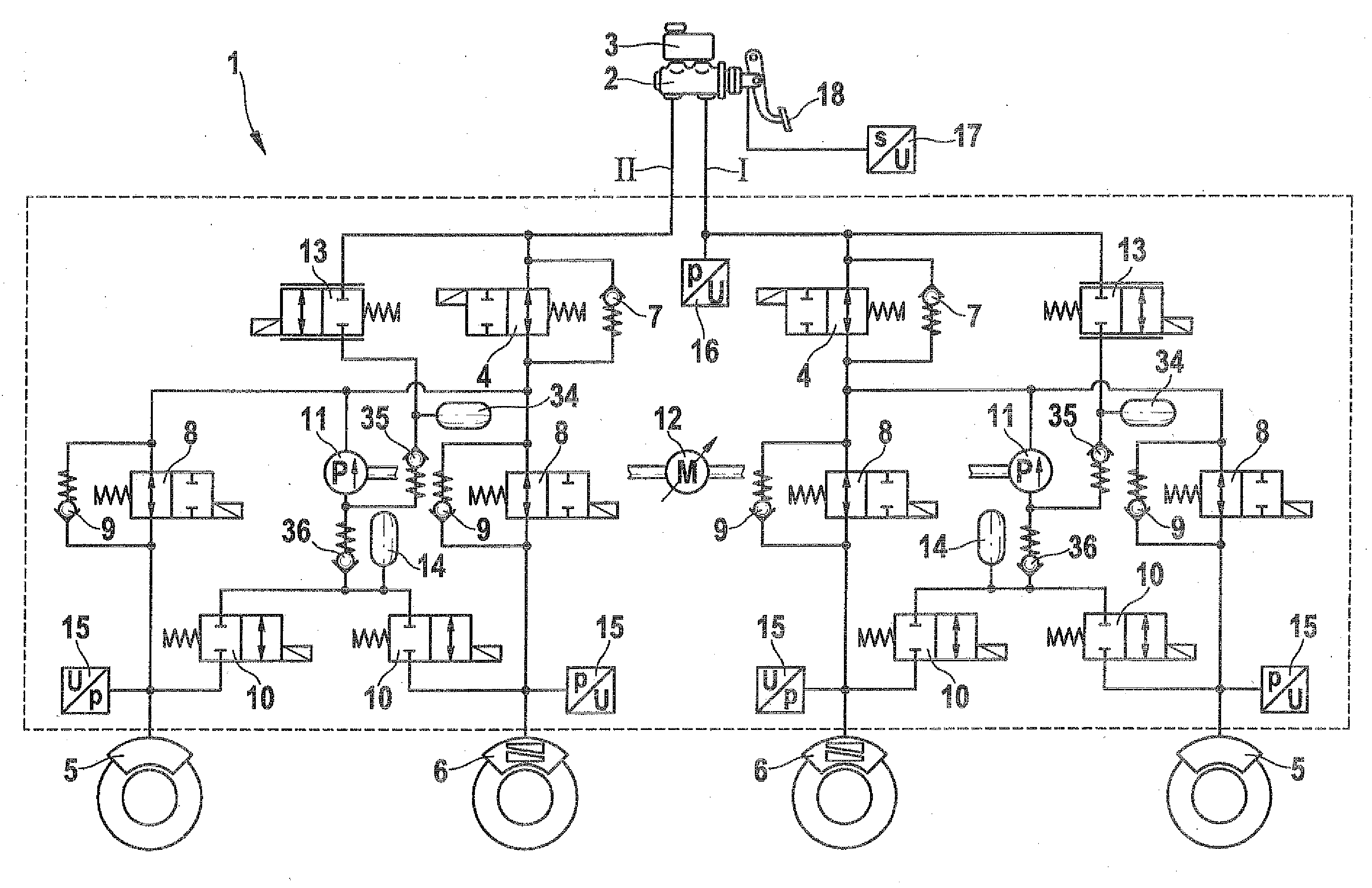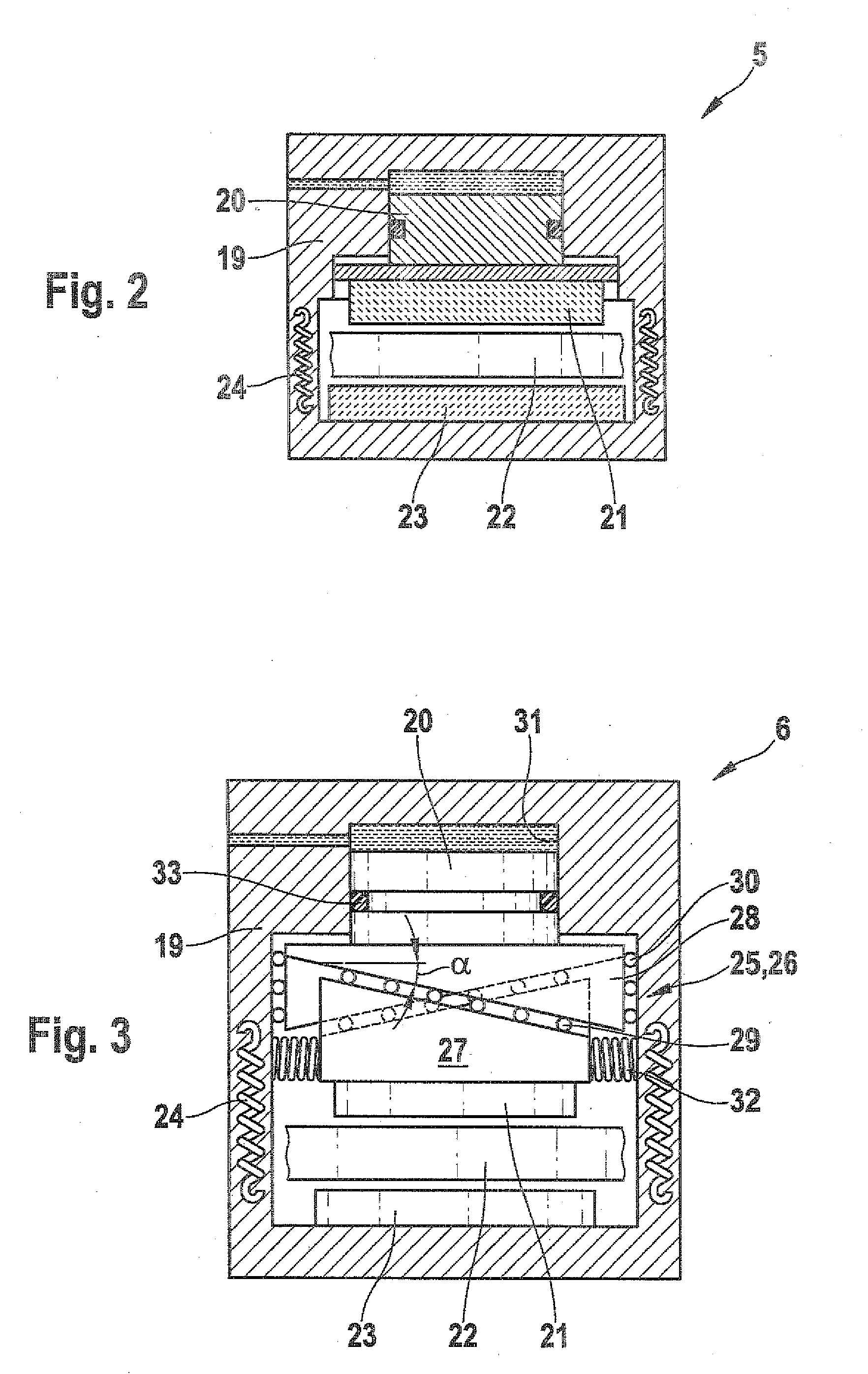Hydraulic vehicle brake system and method for its operation
a technology of vehicle brakes and hydraulic brakes, applied in the direction of braking systems, mechanical equipment, transportation and packaging, etc., can solve the problems of wear compensation, inability to automatically operate, and inability to transfer electronic wheel brakes, etc., to achieve less expensive, reduce actuation energy and actuation power, and increase manufacturing complexity
- Summary
- Abstract
- Description
- Claims
- Application Information
AI Technical Summary
Benefits of technology
Problems solved by technology
Method used
Image
Examples
Embodiment Construction
[0016]The hydraulic vehicle brake system 1 according to the invention shown in the drawings is equipped with wheel slip control (antilock brakes ABS; traction control system TCS; electronic stability program ESP). It is embodied in the form of a dual-circuit brake system with two brake circuits I, II that are connected to a brake master cylinder 2. The brake master cylinder 2 does not have a brake booster. The brake master cylinder 2 has a brake fluid reservoir 3 mounted on it. Each brake circuit I, II is connected to the brake master cylinder 2 via an isolating valve 4. The isolating valves 4 are 2 / 2-port directional control solenoid valves that are open in their currentless normal position. The isolating valves 4 are each hydraulically connected in parallel with a check valve 7 through which a flow can travel from the brake master cylinder 2 to the wheel brakes 5, 6. The isolating valves 4 of each brake circuit I, II are connected to the wheel brakes 5, 6 via brake pressure-increa...
PUM
 Login to View More
Login to View More Abstract
Description
Claims
Application Information
 Login to View More
Login to View More - R&D
- Intellectual Property
- Life Sciences
- Materials
- Tech Scout
- Unparalleled Data Quality
- Higher Quality Content
- 60% Fewer Hallucinations
Browse by: Latest US Patents, China's latest patents, Technical Efficacy Thesaurus, Application Domain, Technology Topic, Popular Technical Reports.
© 2025 PatSnap. All rights reserved.Legal|Privacy policy|Modern Slavery Act Transparency Statement|Sitemap|About US| Contact US: help@patsnap.com



